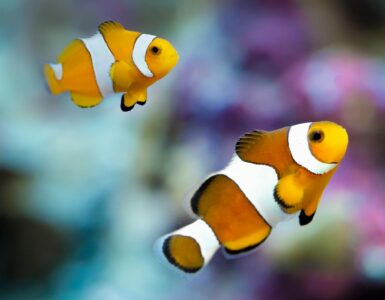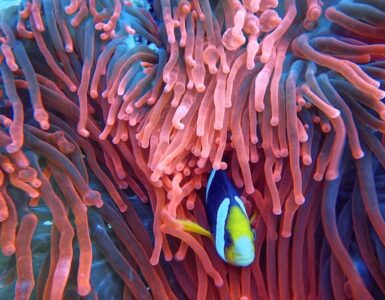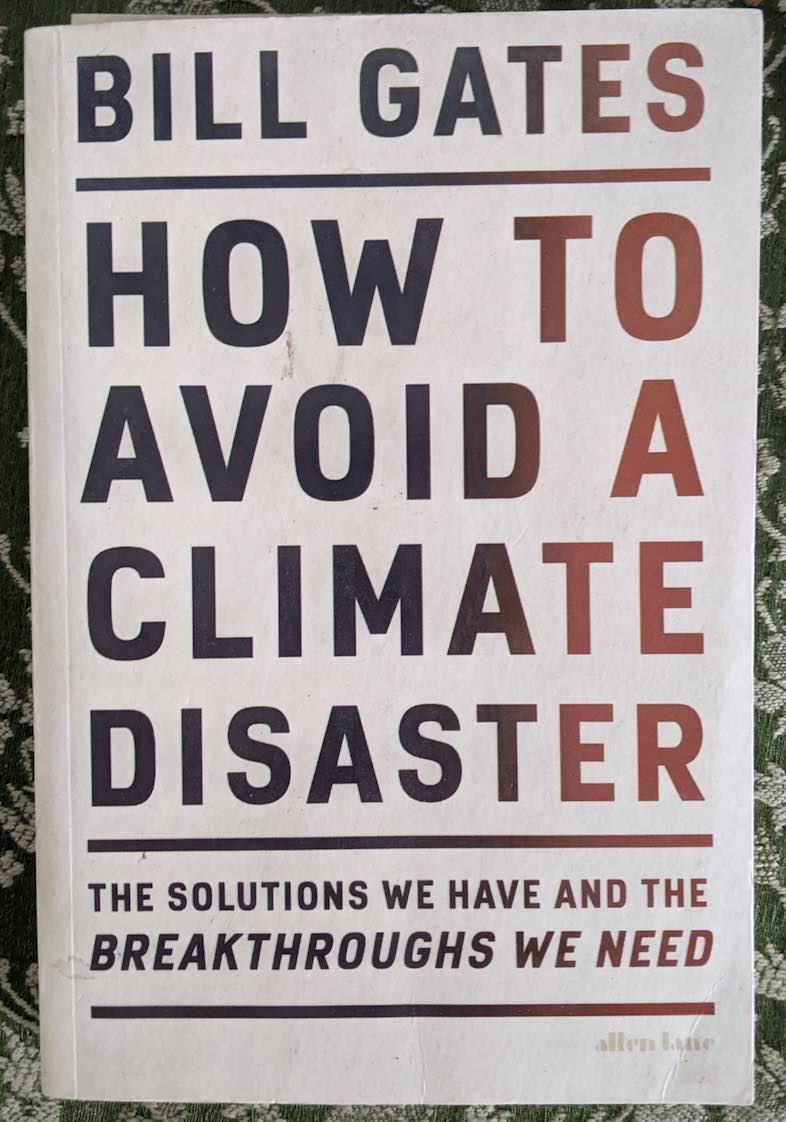A vast patch of green leaves over a lake, river, or water body is a common sight; sometimes, they also have flowers growing on them, which might make them look pretty. However, this aquatic plant, known as water hyacinth, is an invasive species with many problems.


Water hyacinth is a freshwater weed that forms dense, impenetrable mats of leaves that block sunlight, choke the aquatic ecosystem, become a breeding ground for insects, and clog waterways, making it difficult for fishing and boating.
Water hyacinths found their way into waterbodies of many cities, towns, and villages across India. Municipalities spend millions of rupees every year to tackle the problem of water hyacinths in rivers and lakes but still more needs to be done.
Take the case of Pune Municipal Corporation, which spent almost Rs. 20 crores (~US$ 2.4 mn) in the last ten years (2012-22) removing water hyacinths. Then there is a Ramsar wetland in Madhya Pradesh where the invasive plant is causing the death of native marine species by depleting oxygen from the water.
Similar was the case with Assam’s only Ramsar site near Guwahati, Dipor Bil. The freshwater lake provides food and livelihood to thousands of people and a natural ecosystem. However, in the last few years, water hyacinth has infected Dipor Bil, which has impacted the fishing community and the biodiversity in the region.
An Assam-based company is innovatively solving the problem of water hyacinths at Dipor Bil. Kumbhi Kagaz makes paper products using water hyacinth. The hand-made paper products are not only helping in reducing the menace of hyacinths and offer an eco-friendly alternative to traditional wood pulp-based paper products.
We had an insightful conversation with the co-founder of Kumbhi Kagaz, Rupankar Bhattacharjee, on the company’s journey, the water hyacinth problem, the paper-making process, the advantages of Kumbhi Kagaz paper products, and his personal story.
Below are the edited excerpts of our conversation; you can watch the video on YouTube for the entire discussion.
What were you doing before starting Kumbhi Kagaz?
Before 2018, I worked as an installation artist, making artwork from waste parts, metal parts, or plastic material. Along with that, I was also associated with the field of wildlife.
I was interested in snakes right from childhood. In 2018, I rescued a Burmese python snake. While releasing it back into the wild, I encountered Water Hyacinth at Dipor Bil (near Guwahati, Assam’s only Ramsar site).
After much discussion and brainstorming with Dr. Jayaditya Purkaystha, a renowned Herpetologist, who is my mentor in this field, I learned about water Hyacinth and how we can convert it into a valuable product.
Can you explain the problem of Water Hyacinth?
Water hyacinth originated from the Amazon basin.
A story on the web narrates how it was introduced in Inda; I don’t know whether it’s true or false. It says that in the 1800s, Lady Hastings, wife of Lord Warren Hastings, the first governor-general of India, loved its flower and introduced Water Hyacinth in Bengal. She gifted it to someone, and it spread all across India. Therefore, the water hyacinth in India is known as the ‘Terror of Bengal.’
Water Hyacinth is a fast-growing plant that multiplies itself in seven to nine days. According to research, if we cannot control the growth of water hyacinth, then it can cover the entire world in two and a half years.
The problem with water hyacinth is that it eats up the space of local plant bodies. If any wetland is affected by water hyacinth, it impacts other indigenous aquatic plants like Water Lilies or Fox nuts. Furthermore, when the water Hyacinth dies, it settles down, and that causes siltation. It also blocks the sunlight, so it becomes difficult for aquatic life.
Several reasons make water hyacinths a disastrous plant. If I can give one or two good points to water hyacinth, there are ten bad points.
Even when the water hyacinth is removed, it still grows back again; what is the reason for this?
It is because of vegetative propagation, where a tiny part of the root or stem can help the plant to grow. Even when the water hyacinth is removed from the water body, a little bit can remain, making it grow back.
I have seen in Dipor Bil, where the water hyacinth has completely dried up during the dry season. However, again during the rainy season, when water covers up the dried leaves, that area gets filled with the plant in a month or so.
How did making a paper out of this plant come to you?
I am a member of Help Earth, an NGO established in 2006 by my mentor, Jayaditya Purkaystha, and his wife, Dr Madhurima Das. The NGO works on the protection of lesser-known animals and also the conservation of water bodies.
Help Earth started researching the protection and conservation of the wetland, and they have been working on Dipor Bil right from its inception. In 2013-14 they started working on the problem of water hyacinth. They found that they like a lot of local artisans making bags and handicraft items from dried water hyacinths.
In 2018 when I met Dr. Jayaditya Purkaystha, he asked me if anything else could be done with water hyacinth fibers. After which, I spent time researching this, and the first thing that struck me was using plant fibers to make it into paper.
As I had no access to chemicals or machines, I researched the ancient paper-making techniques used in China and Egypt. If those civilizations could make paper 3000-4000 years ago without chemicals, why can’t we do it? Another challenge I had was creating printable paper because handmade papers are not printable as they damage the printer if used.
During covid lockdown, when everybody was at home, I spent my time birding, taking photographs, and researching paper-making. In 2020, I was able to crack the art of making chemical-free, printable, hand-made paper using water hyacinth.
In 2021, we participated in our first competition organized by UK-based WasteAid. We became the global competition winner and won 10,000 euros. At that time, I had a proprietorship company, Inside Out.
We decided to close that company and incorporate Kumbhi Kagaz with three founding members, me and my co-founders, Aniket Dhar and Madhurima Das.
Can you elaborate a little more on the process of making this paper?
Our paper-making process is very simple as we have found a way to extract the fibers of dried water hyacinth, which other companies do chemically. We have a semi-automatic machine that divides the water hyacinth into two parts – microfibers and dust material. The fibers become the bonding agent, and the gaps between the fibers are filled up with the cellulose material of water hyacinth.
We don’t add chemicals because water hyacinth is a lignin-poor plant. Generally, in every paper, lignin is a component that is removed before making paper because it brings stiffness to paper. Even without eliminating lignin, we found a way to use the hydrophilic quality of water hyacinth to make the paper.
We have a mold and deckle process, where we put the pulp in a sieve, then remove the sheet, and it gets dried. We push the dried paper through a roller to flatten the sheet and then cut the paper to make notebooks.
What is your process of collection of water hyacinth
We use members of the fishing community to collect the dried water hyacinth. We have made friends with village headmen, known as ‘Gaon Bura’ in Assam. He helps us in organizing the collection of the plant.
Collecting water hyacinths doesn’t hamper our production because we collect it once a year during December when it’s the dry season. So it is already dried up in the field when it is collected.
How much quantity of paper do you manufacture?
Our unit can manufacture 1500 sheets per day, but because of space constraints and the humid weather condition of Assam, we can hardly produce 150 to 200 sheets a day, so it’s almost less than a one-tenth hour of optimal capacity.
What is the proportion of paper products for a given quantity of water hyacinth?
We can manufacture 18 sheets of paper for one kg water hyacinth, which can be cut to make 72 sheets of A4 paper.
Besides saving trees, how is water hyacinth paper comparable to tree wood pulp paper?
The paper manufactured from wood pulp is commercial paper which is different from handmade paper.
However, I can compare Kumbhi Kagaz’s paper with commercial paper on water consumption requirements. One A4 size 75 GSM sheet made from tree wood pulp consumes 15 to 20 liters of water in manufacturing. While the same sheet of A4 size made from water hyacinth consumes 1.5 liters of water, it’s ninety percent less. We are not only saving trees, we are also saving water.
Our paper is not white, it’s slightly brownish, and you can see the fibers, giving it uniqueness.
How many products do you have as of now?
We make different sets of notebooks, handy notepads, and spiral-bound notebooks. When we get orders for wedding cards, we also do that.
Who are your primary customers?
Many businesses buy our products and notebooks for corporate gifting and as souvenirs. Clients like Assam Forest Department and Startup Assam use our handy notebooks for seminars and events.
Then we also have many artists who prefer drawing or doodling on our paper.
Can general consumers buy Kumbhi Kagaz products?
Kumbhi Kagaz products are available on our company website. We have made a user-friendly website so that even non-technical customers can use it and buy the products from there.
Our products are unavailable on e-commerce sites, as our research has found that few people buy handcrafted products from there.
Tell us about your plan and your vision.
Currently, we are focusing only on manufacturing paper and paper products. We also explore making chemical-free white paper and other products using water hyacinth.
We are the only company that manufactures handmade paper from water hyacinth, which is chemical-free and printable. We are confident it will take other companies a lot of time to reach us. Until then, we will extend a little bit more in our process.
I am very optimistic about the potential of water hyacinth and ready to share my knowledge with anyone interested in making something with this material.
What was the idea behind selecting this name – Kumbhi Kagaz?
After we closed Inside Out, a proprietorship firm, we decided to open a private limited company. We did a lot of research to find a short name that is easy to remember.
Most Hindi and Sanskrit-speaking people in India know water hyacinth as Jal Kumbhi, and then I added the Hindi word for Paper, which is Kagaz. I also liked the fact that both words start with the letter K.
Tell us about your connection with nature and the environment.
I feel very strongly connected to wildlife. I enjoy various wildlife moments, whether sitting in my backyard, watching birds, photographing, or rescuing snakes.
Watch the entire conversation on Change Started YouTube Channel.







We have also prepared water hyacinth paper for Science Exibition and bagged 2 place in State level Science Exibition.
That’s wonderful Sunita..Did you not pursue it afterwards
Respected sir, Date: 11.3.24
I suggest t explore possibilities of making Ethanol also from water hyacinth. Marketing of Ethanol in place of Kumbhi Kagaj may be easy.
Thanks & Regards
S.k.Jalan
Ph.9864218999
Email: